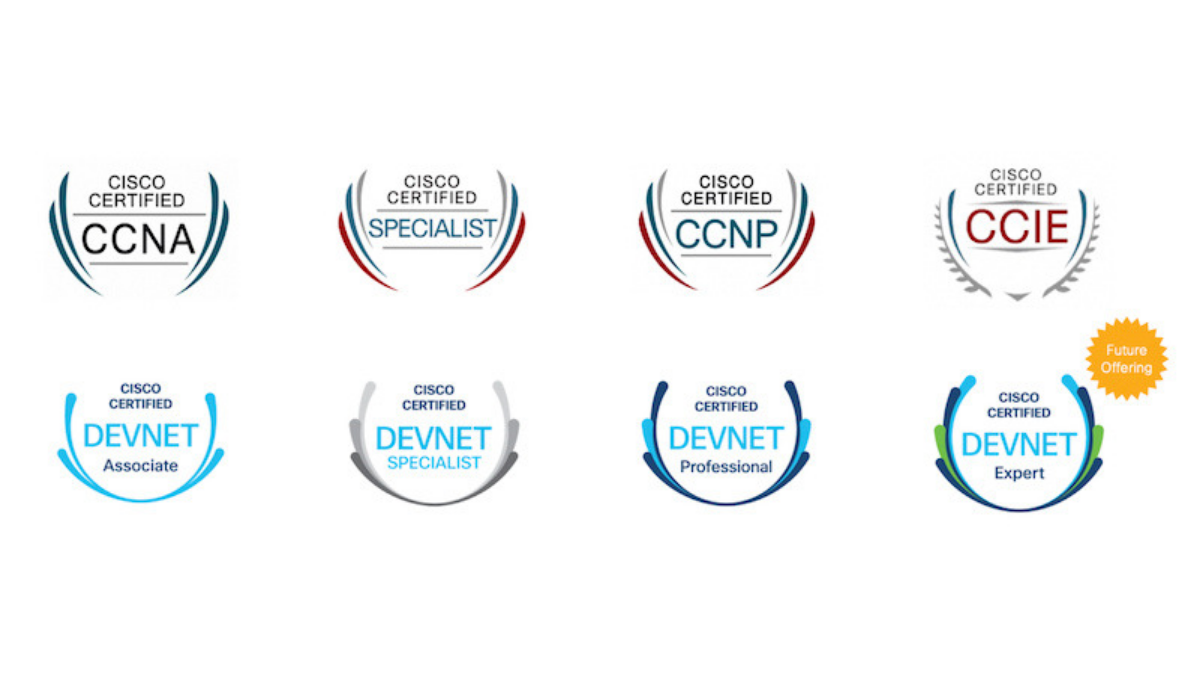Description
Duration: 05 days
Version 1.0
Overview
Implementing Cisco IP Telephony & Video, Part 2 (CIPTV2) v1.0 is a five-day course that prepares the learner for implementing Cisco Unified Communications Manager, Cisco VCS-C, and Cisco Expressway series in a multisite voice and video network. It covers globalized call routing, URI call routing, global dial plan replication based on the ILS, Cisco Unified SRST, mobility features, call admission control, .integration of Cisco VCS and Cisco Unified Communications Manager, and Cisco Mobile Remote Access on Cisco Expressway Series.
Note: Students registering for this course will be receiving their course kit in a digital format. To be able to view your digital kit you will need to bring a laptop PC and/or a compatible iPad or Android tablet, the recommended system requirements and instructions to access the course kit content can be found at the following link:Digital Course Kit Requirements and Instructions
Please be aware that this digital version is designed for online use, not for printing. You can print up to 10 pages only in each guide within a course. Please note that every time you click the Print button in the book, this counts as one page printed, whether or not you click OK in the Print dialog.
Objectives
Upon completing this course, the learner will be able to meet these overall objectives:
• Describe multisite deployment issues and solutions, and describe and configure required dial plan elements
• Implement call-processing resiliency in remote sites by using Cisco Unified SRST and MGCP fallback
• Implement bandwidth management and CAC to prevent oversubscription of the IP WAN
• Implement Device Mobility, Cisco Extension Mobility, and Cisco Unified Mobility
• Implement Cisco VCS Control and Cisco Expressway Series
• Describe and implement CCD and ILS
Prerequisites
The knowledge that you should have before attending this course should include the following:
• Working knowledge of converged voice, video, and data networks
• Working knowledge of the MGCP, SIP, and H.323 protocols and their implementation on Cisco IOS gateways
• Ability to configure and operate Cisco routers and switches
• Ability to configure and operate Cisco Unified Communications Manager in a single-site environment
Who Should Attend
The primary target audiences for the course are:
• Network administrators and network engineers
• CCNP Collaboration candidates
Secondary audiences are:
• Systems engineers
What’s included?
- Authorized Courseware
- Intensive Hands on Skills Development with an Experienced Subject Matter Expert
- Hands on practice on real Servers and extended lab support 1.800.482.3172
- Examination Vouchers & Onsite Certification Testing- (excluding Adobe and PMP Boot Camps)
- Academy Code of Honor: Test Pass Guarantee
- Optional: Package for Hotel Accommodations, Lunch and Transportation
Training Solutions
With several convenient training delivery methods offered, The Academy makes getting the training you need easy. Whether you prefer to learn in a classroom or an online live learning virtual environment, training videos hosted online, and private group classes hosted at your site. We offer expert instruction to individuals, government agencies, non-profits, and corporations. Our live classes, on-sites, and online training videos all feature certified instructors who teach a detailed curriculum and share their expertise and insights with trainees. No matter how you prefer to receive the training, you can count on The Academy for an engaging and effective learning experience.
Methods
- Instructor-Led (the best training format we offer)
- Live Online Classroom – Online Instructor-Led
- Self-Paced Video
Speak to an Admissions Representative for complete details
| Start | Finish | Public Price | Public Enroll | Private Price | Private Enroll |
|---|---|---|---|---|---|
| 5/12/2025 | 5/16/2025 | ||||
| 6/2/2025 | 6/6/2025 | ||||
| 6/23/2025 | 6/27/2025 | ||||
| 7/14/2025 | 7/18/2025 | ||||
| 8/4/2025 | 8/8/2025 | ||||
| 8/25/2025 | 8/29/2025 | ||||
| 9/15/2025 | 9/19/2025 | ||||
| 10/6/2025 | 10/10/2025 | ||||
| 10/27/2025 | 10/31/2025 | ||||
| 11/17/2025 | 11/21/2025 | ||||
| 12/8/2025 | 12/12/2025 | ||||
| 12/29/2025 | 1/2/2026 |
Course Outline
Module 1: Multisite Deployment Implementation
Lesson 1: Identifying Issues in a Multisite Deployment◦Multisite Deployment Issues Overview
◦Quality Issues
◦Bandwidth Issues
◦Availability Issues
◦Overview of Dial Plan Issues
◦Fixed-Length vs. Variable-Length Numbering Plans
◦Optimized Call Routing and PSTN Backup
◦Overlapping and Nonconsecutive Numbers
◦PSTN Requirements
◦Dial Plan Scalability Issues
◦NAT and Security Issues
Lesson 2: Identifying Multisite Deployment Solutions◦Multisite Deployment Solution Overview
◦Quality of Service
◦Overview of Solutions to Bandwidth Limitations
◦Low-Bandwidth Codecs and RTP-Header Compression
◦Local Conference Bridges
◦Transcoders
◦Mixed Conference Bridge
◦Multicast MOH from Branch Router Flash
◦Call Admission Control
◦Availability Overview
◦PSTN Backup
◦MGCP Fallback: Normal Operation
◦Fallback for IP Phones: Normal Operation
◦Call Forward Unregistered
◦Automated Alternate Routing
◦Mobility Solutions
◦Overview of Dial Plan Solutions
◦NAT and Security Solutions
Lesson 3: Implementing a +E.164-based Dial Plan for International Multisite Deployments◦Overview of Multisite Connection Options
◦SIP Trunk Review
◦H.323 Trunks
◦Trunk Implementation Overview
◦Multisite Dial Plan Overview
◦Implementing Site Codes for On-Net Calls
◦Implementing PSTN Access
◦Implementing Selective PSTN Breakout
◦Implementing PSTN Backup for On-Net Intersite Calls
◦Implementing TEHO
◦Globalized Call Routing Overview
◦Globalization of Localized Call Ingress on Gateways
◦Localized Call Egress
◦Globalized Call Routing Examples
Lesson 4: Implementing a URI-Based Dial Plan for Multisite Deployments◦URI Dialing Overview
◦URI Endpoint Addressing Review
◦URI Partitions and CSSs Review
◦URI Call Sources Review
◦Blended Addressing
◦FQDNs in Directory URIs
◦URI Call Routing
Module 2: Centralized Call-Processing Redundancy Implementation
Lesson 1: Implementing SRST and MGCP Fallback◦Remote Site Redundancy Overview
◦MGCP Fallback Operation
◦Cisco Unified SRST Operation
◦Cisco Unified Communications Manager Express in SRST Mode
◦Dial Plan Requirements for MGCP Fallback and Cisco Unified SRST Scenarios
Module 3: Bandwidth Management and CAC ImplementationLesson 1: Managing Bandwidth◦Bandwidth Management Options
◦Cisco Unified Communications Manager Codec Configuration
◦Local Conference Bridge Implementation
Lesson 2: Implementing CAC◦CAC Overview
◦Enhanced Location CAC Characteristics
◦Intracluster Enhanced Location CAC
◦Intercluster Enhanced Location CAC
◦Enhanced Location CAC Considerations
◦Automated Alternate Routing
Module 4: Implementation of Features and Applications for Multisite Deployments
Lesson 1: Implementing Device Mobility◦Issues with Devices Roaming Between Sites
◦Device Mobility Overview
◦Device Mobility Configuration Elements
◦Device Mobility Operation
◦Device Mobility Considerations
◦Device Mobility Interaction with Globalized Call Routing
◦Device Mobility Configuration
Lesson 2: Implementing Cisco Extension Mobility◦Issues with Users Roaming Between Sites
◦Cisco Extension Mobility Overview
◦Cisco Extension Mobility Configuration Elements
◦Cisco Extension Mobility Operation
◦Cisco Extension Mobility Considerations
◦Cisco Extension Mobility Configuration
Lesson 3: Implementing Cisco Unified Mobility◦Cisco Unified Mobility Overview
◦Cisco Unified Mobility Call Flows
◦Cisco Unified Mobility Implementation Requirements
◦Cisco Unified Mobility MGCP or SCCP Gateway PSTN Access
◦CSS Handling in Cisco Unified Mobility
◦Cisco Unified Mobility Access-List Functions
Module 5: Cisco VCS and Cisco Expressway
Lesson 1: Describing Cisco VCS and Cisco Expressway Series Deployment Options◦Cisco VCS and Cisco Expressway Series Overview
◦Cisco VCS and Cisco Expressway Series Deployment Options
◦Cisco VCS and Cisco Expressway Series Platforms, Licenses, and Features
◦Cisco VCS and Cisco Expressway Clustering
◦Cisco VCS and Cisco Expressway Series Initial Configuration
Lesson 2: Deploying Users and Local Endpoints in Cisco VCS Control◦User Authentication Options
◦Endpoint Registration
◦Endpoint Authentication
◦Cisco TMS Provisioning
◦Zones
◦Links
◦Pipes
Lesson 3: Interconnecting Cisco Unified Communications Manager and Cisco VCS◦Cisco Unified Communications Manager and Cisco VCS Interconnection Overview
◦Call Flow between Cisco Unified Communications Manager and Cisco VCS
◦Cisco VCS Dial Plan Components
◦Configuration of Cisco Unified Communications Manager and Cisco VCS Interconnections
◦FindMe Configuration Procedure
Lesson 4: Implementing Unified Communications Mobile and Remote Access◦Unified Communications Mobile and Remote Access Overview
◦Unified Communications Mobile and Remote Access Components
◦Unified Communications Mobile and Remote Access Operations
◦Unified Communications Mobile and Remote Access Configuration Procedure
Module 6: GDPR and CCD
Lesson 1: Implementing ILS and GDPR◦ILS Overview
◦ILS Networking
◦GDPR Overview
◦ILS Network Configuration Procedure
◦Exchange of Directory URIs
◦Configuration of Directory URI Exchange
◦Exchange of Numbers and Patterns
◦Configuration of Number and Pattern Exchange
◦Import and Export of Global Dial Plan Catalogs
Lesson 2: Implementing CCD◦SAF and CCD Overview
◦SAF Characteristics
◦CCD Characteristics
◦CCD Operation
◦Monitoring Learned Routes
◦Cisco Unified SRST Considerations
◦Considerations When Using Globalized Call Routing
◦Trunk Considerations
◦Considerations When Using Clustering Over the WAN
◦SAF and CCD Implementation Overview
◦Configure SAF and CCD
Lab Outline
Guided Lab 1: Implementing a +E.164-Based Dial Plan for International Multisite Deployments
• Configure Partitions and CSSs
• Implement H.323 and MGCP Gateways and Configure SIP Intercluster Trunks
• Configure Inbound and Outbound PSTN Calls for the HQ Cluster
• Configure Inbound and Outbound PSTN Calls for the BR1 Cluster
• Implement Internal Dialing
Guided Lab 2: Implementing a URI-Based Dial Plan for Multisite Deployments• Implementing URI Dialing Within the HQ Cluster
• Implement URI Call Routing Between the HQ, BR1, and BB Clusters
Hardware Lab 3: Implementing SRST and MGCP Fallback• Configure SRST Gateways in Cisco Unified Communications Manager
• Configure a Cisco IOS Gateway for MGCP Fallback and SRST
• Implement a Dial Plan in Cisco Unified Communications Manager Supporting Outbound Calls During SRST Mode
• Implement a Dial Plan at the SRST Gateway Supporting Inbound and Outbound Calls When in MGCP Fallback or in SRST Mode or Both
Hardware Lab 4: Implementing Bandwidth Management• Enable a Software Conference Bridge
• Configure Regions
• Implement Transcoders
• Implement a Hardware Conference Bridge
Hardware Lab 5: Implementing Enhanced Location CAC• Implement Enhanced Location CAC
Hardware Lab 6: Implementing Device Mobility• Configure Device Mobility
Hardware Lab 7: Implementing Extension Mobility• Configure Extension Mobility
Hardware Lab 8: Implementing Cisco Unified Mobility• Configure Mobile Connect
• Configure MVA
Hardware Lab 9: Configuring Cisco VCS Control to Register Endpoints• Perform Initial Cisco VCS Control Configuration
• Enable Provisioning on the Cisco TMS Server and Cisco VCS Control
• Configure a Subzone for Cisco Jabber Video for TelePresence Clients
Hardware Lab 10: Implementing a Dial Plan in Cisco VCS Control to Interconnect with Cisco Unified Communications Manager• Configure Cisco Unified Communications Manager to Connect with Cisco VCS
• Configure Cisco VCS to Connect with Cisco Unified Communications Manager
• Configure Bandwidth Limitations Between Cisco VCS and Cisco Unified Communications Manager
• Configure FindMe for Cisco Jabber Video for TelePresence Clients
Hardware Lab 11: Implementing Mobile and Remote Access via Cisco Expressway• Implement Support for Internal Cisco Jabber Clients
• Configure Initial Settings on Cisco Expressway Series
• Configure Mobile and Remote Access on Cisco Expressway Series
• Configure a Secure Traversal Zone Connection for Cisco Unified Communications
• Configure Cisco Jabber to Register via Mobile and Remote Access


